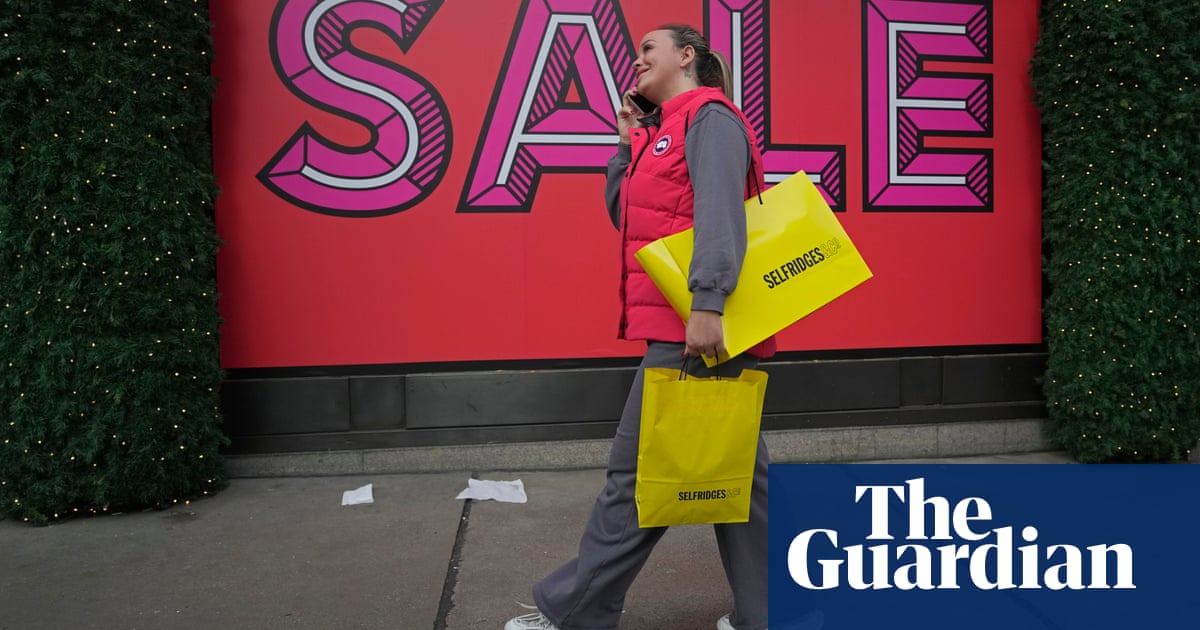
Retailers have recorded a small pickup in Boxing Day footfall, but visits to stores remained well below pre-pandemic levels as several high street chains stayed shut.
Retailers have been braced for weak spending over the Christmas period as the UK economy stagnates amid the cost of living crisis.
By midday on Boxing Day, footfall at retail locations was up by 1.4% compared with a year earlier, thanks to visits to high streets and retail parks, according to preliminary data from MRI Software, a retail data company. However, compared with levels in 2019, before the first coronavirus lockdown, footfall was still down by about 30%.
Branches of John Lewis, Marks & Spencer, Next and the discounters Poundland and Home Bargains did not open on Boxing Day. The supermarkets Aldi, Iceland and Waitrose also remained closed, as did many branches of Lidl, in line with previous years.
Large queues did form, however, outside stores including Harrods and Selfridges in London, Primark in Newcastle and Lush in Liverpool.
Diane Wehrle, the chief executive of Rendle Intelligence and Insights, a consultancy, said she expected store visits to be down by a quarter compared with 2019, though she thought locations with stronger leisure offerings such as restaurants and bars may have fared better.
Even if the number of visits rises, analysts are expecting sales volumes to fall compared with recent years but the value of sales could still rise because of inflation in prices.
The Bank of England has raised interest rates steadily from 0.1% in late 2021 to 5.25% two years later to try to calm inflation. That has raised borrowing costs for many households and will slow economic growth. At the same time, a buffer of savings built up during pandemic lockdowns has mostly been spent.
Richard Lim, the chief executive of Retail Economics, a consultancy, said: “Boxing Day sales are going to look a lot more subdued than usual. Consumers will be counting the cost of Christmas against the background of squeezed incomes and quite a challenging year.”
Lim said the Boxing Day sales had become less important to retailers in recent years, in part because of the rise in discounts before Christmas, such as “Black Friday” and “Cyber Monday” in November.
The Boxing Day sales were traditionally used by retailers to shift excess stock, but Lim added that there may be less excess than usual because of cautious ordering amid the economic difficulties.
A poll of 2,000 UK consumers by Barclaycard suggested that budgets for post-Christmas sales were up by 10% compared with 2022 to £253, before taking inflation into account. However, the company said shopping for sales may be spread over more days thanks to increased online shopping, including on Christmas Day.
Karen Johnson, the head of retail at Barclays, said: “While Boxing Day remains the most popular day to start bargain-hunting, retailers are no longer putting all their eggs in one basket and are instead spreading out their discounts to boost ongoing demand – very similar to what we saw with early Back Friday deals in November.
“The earlier start means that some retailers will be in the fortunate position of having sold out of sales stock by early January, so we may see spring products on shelves sooner than expected.”
Shoppers had been forecast to spend £3.7bn on Boxing Day, which is 3% less than a year ago.












